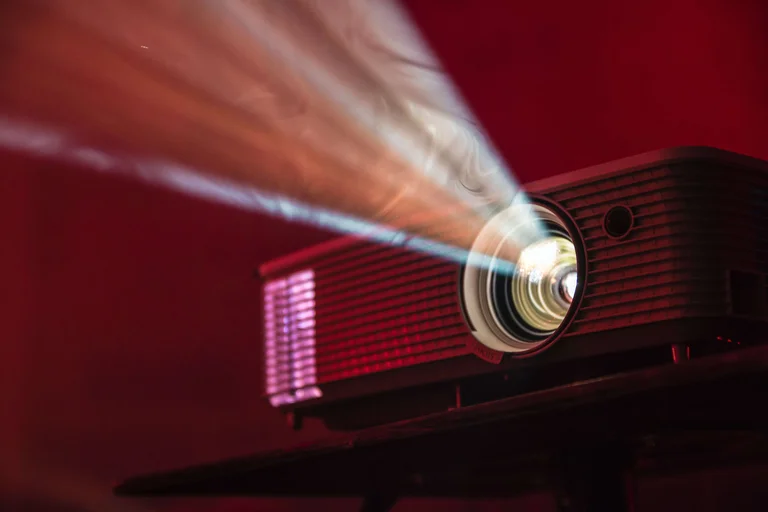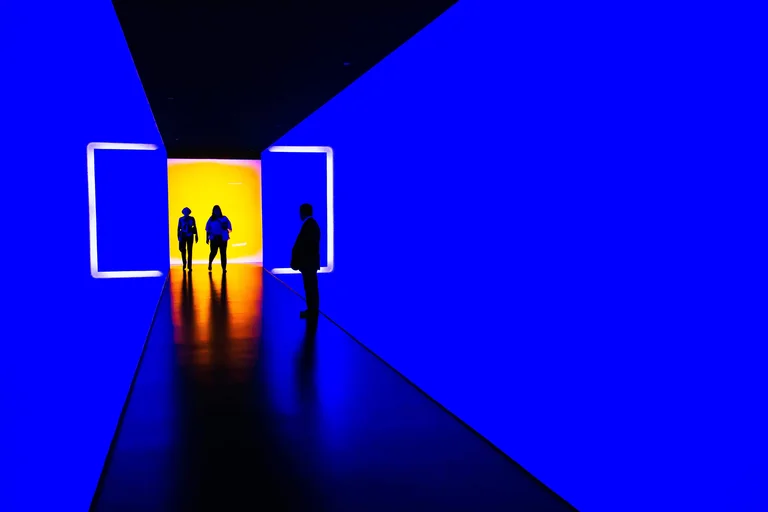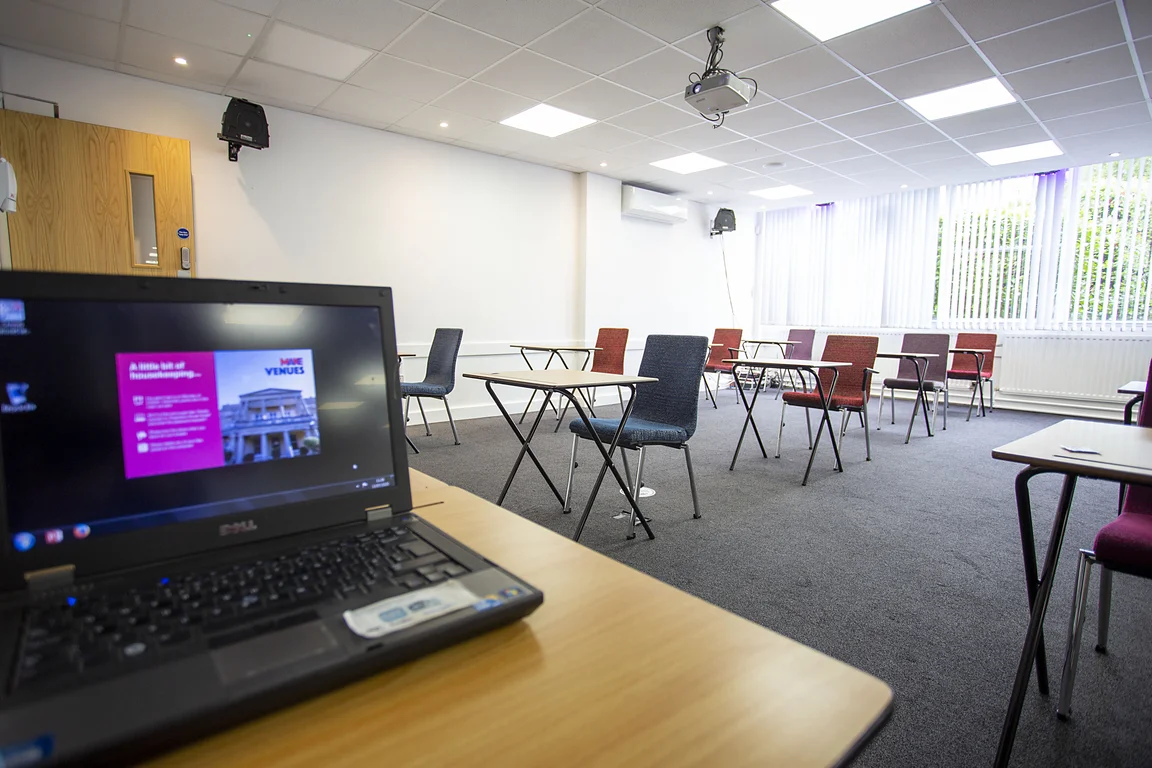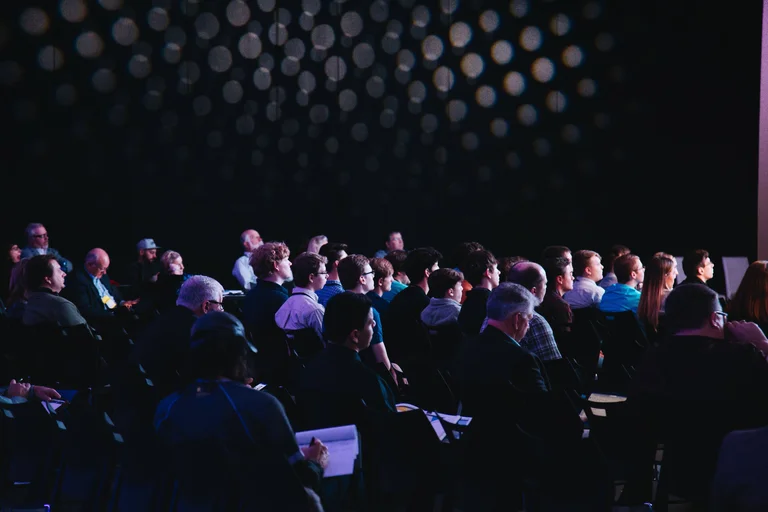When it comes to conferences and events, content is king. However, when a business has something to say, the way they communicate it also says a lot about its values and its people. This is where good AV comes into place.
At its worst, a conference is one person talking in front of a collection of slides. At its best, speakers are dynamic, presenting in front of informative and entertaining backdrops, and feeding information to the audience through every one of our senses. Great event organisers look to achieve the latter and expect support from their venue support team.
So, what exactly is audio visual or conference AV? And how can it help you to deliver an impactful event?
What Is Audio Visual?
It’s all in the name, audio visual or ‘AV’ is often correctly associated with production, the art of creating backdrops and settings to add theatre to an event. But also the practicalities in delivering communication to large audiences (e.g. making sure everyone can hear you!).
Great AV however, is understanding that any event needs to speak to all senses; audio and visual. How can these senses be supercharged to ensure the message gets through, not just through what is being said, but how it is being said.
AV can be broken down into three main production areas; sound, visuals and lighting. Of course, there are other areas, including staging, presentation, multimedia, and also hybrid event technologies, that allow what is happening in one room to be replicated across the venue or across the world into another.
From corporate conferences, meetings and training, to live theatre productions; from something as basic as a simple mic and speaker in a small meeting, brainstorming facilities in a creative meeting, or a full set design and lighting display for a main plenary, the AV is becoming a larger consideration in the meetings industry.

Sound
Referring to the ‘audio’ part of audio visual, sound is one of the most essential elements of the event. Audio covers anything from music, sound effects to microphones and speakers to ensure delegates can clearly hear and understand presentations.
Like a great film, sound design is never truly appreciated but does so much for the experience. Imagine Star Wars without the lightsaber ‘buzz’ and you’ll get the idea. Many events design the sound scape as acutely as they design the musical backdrops and the voices on stage.
Visuals
Visual refers to everything visual associated with presentations and performances. Visuals encompass a wide variety of elements and as such is vital to get right.
This is where content leads; if a message is inspirational then visuals need to be light, spectral and imaginative, equally, if we’re looking for something more fun, we can add in props and colour. From set design to PowerPoint slides, even the lectern someone presents on can adopt a new style that supports the businesses message.
This is where creativity and planning come hand in hand, again depending on the size and style of the event. It's not all about massive sets and intricately designed visuals, there is often nothing more striking than one great speaker, with one light.
If you want to focus attention, this can be a great way to use visuals, without over using it.
Lighting
Lighting comes under the visual elements, but deserves a little more attention, as it is often underused by larger productions - it's fair to say in smaller events that it isn’t needed at all.
Lighting is much more than just visual, it can enhance moods and emotions - creating the perfect emotion for an event, be it anticipation, awe or inspiration. Be careful though with lighting and food, it's always good to look at how your menu will look under the glare of different lights, sometimes even the most appetising meal can look drab under a blue light!
Lighting isn’t just for the inside either, venues need to set expectations from the moment guests arrive, and continue to underline them, so consider outside lighting, spotlights, passage lighting, hallway lighting; all can make or break an event and encapsulate what your event is trying to convey.

How Can You Successfully Incorporate AV Into Your Event?
So, what does great audio visuals look like and how can you implement it into your event?
1. Plan, Consult, Do
It’s first important to understand the limitations of audio visuals for your event. Does your venue have all the necessary equipment, lighting, speakers, projectors, conferencing etc. Once you know what you’re working with you can start to plan the audio visual for your event.
A purpose built venue most likely will, this is a great place to start as they will have the right kit, but also the understanding of how to use it.
Whether you’re working with the venue, or a production company for your audio visuals it’s important to be on the same page for what is expected. Plan what you want ahead of time, discuss ideas and get a consultation of what is possible and suggested from your AV team.
AV is a design process, it needs to be planned in the same way as a script needs to be written. What are the audio and visual elements that will support the content on stage.
Do this in plenty of time for the event, preferably when you are creating the agenda. This will help tie the audio and visuals together inline with the subjects and context of the presentation - e.g. having specific coloured lighting to evoke a certain mood when discussing a topic.
2. Remember The Importance Of Audio
It’s all very well getting swept up in the visual elements of audio visual for events and conferencing; lights, props, projectors etc. However, it’s important to get the basic sound elements right before expanding into more ‘creative’ territory.
Ensuring the audio is consistent for all delegates is of utmost importance, no one wants to feel like they got the short straw based on where they’re sat - so don’t let it happen. At the same time consider the sound for breaks during your conference or event, quiet music can make all the difference in filling the empty space of the room.
Also consider sound on video elements, speakers that are being streamed into the event, or even entertainment. It all needs to fit together well so sound is consistent in terms of volume and of the delivery of what is being said.
3. The Right Set-up For The Right Type Of Event
What type of event are you organising? A large conference, or a smaller meeting? While audio visual encompasses all events, no matter how big or small - the equipment and tactics that are implemented will change drastically based on what is necessary.
4. Don’t Overdo It
It’s easy to get carried away when planning all the fancy lights and presentations your event could have, the possibilities are almost endless. With that being said, it’s important not to get distracted and not take away from the message of the event.
Sometimes with events, less is more, so consider if your event is becoming too busy and build your audio visual around your agenda, not the other way around.
Why Is Audio Visual For Events & Conferencing More Important Now Than Ever?
According to industry research, the average length of a meeting is dropping all the time. The traditional one hour time slot for a meeting or a speaker is being reduced right down, and organisers are looking to divide their meetings into slots of 15-45 minutes; we need to make them count.
The reason is that attention spans are also reducing. Delegates of all ages are no longer content to be fed information from the stage, they want to be involved, they want to contribute through handheld technologies, they want to ask questions and get answers on the spot. In short, every session is about making that 15-45 minutes hit as hard as possible.
If we’re communicating all the time through intelligent visuals, we are already reducing the amount of words that are being said, without reducing the time on stage. AV lets us do this, and allow time for delegate interaction.
However, with that being said, for larger events, AV has become secondary only to what is being communicated. The AV, production and organisation are done in concert.
Conclusion
Holding a successful event of any kind takes proper planning and preparation. Here at Make Venues, we take the stress away and come equipped with all the technology, services and functionality you may need to hold your event.
With venues across Westminster, Bristol and Leamington Spa, Make Venues is dedicated to providing an intuitive experience for you and your delegates. As a venue group, we have invested the proper time and resources into technology to enable businesses to work remotely and interact just as engagingly.
If this is of interest to you, contact our team today on 0808 168 5876, or get in touch via our enquiry form for more information.

